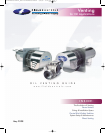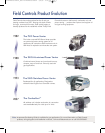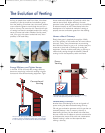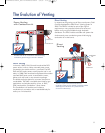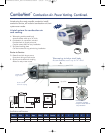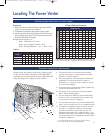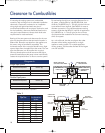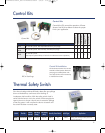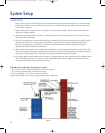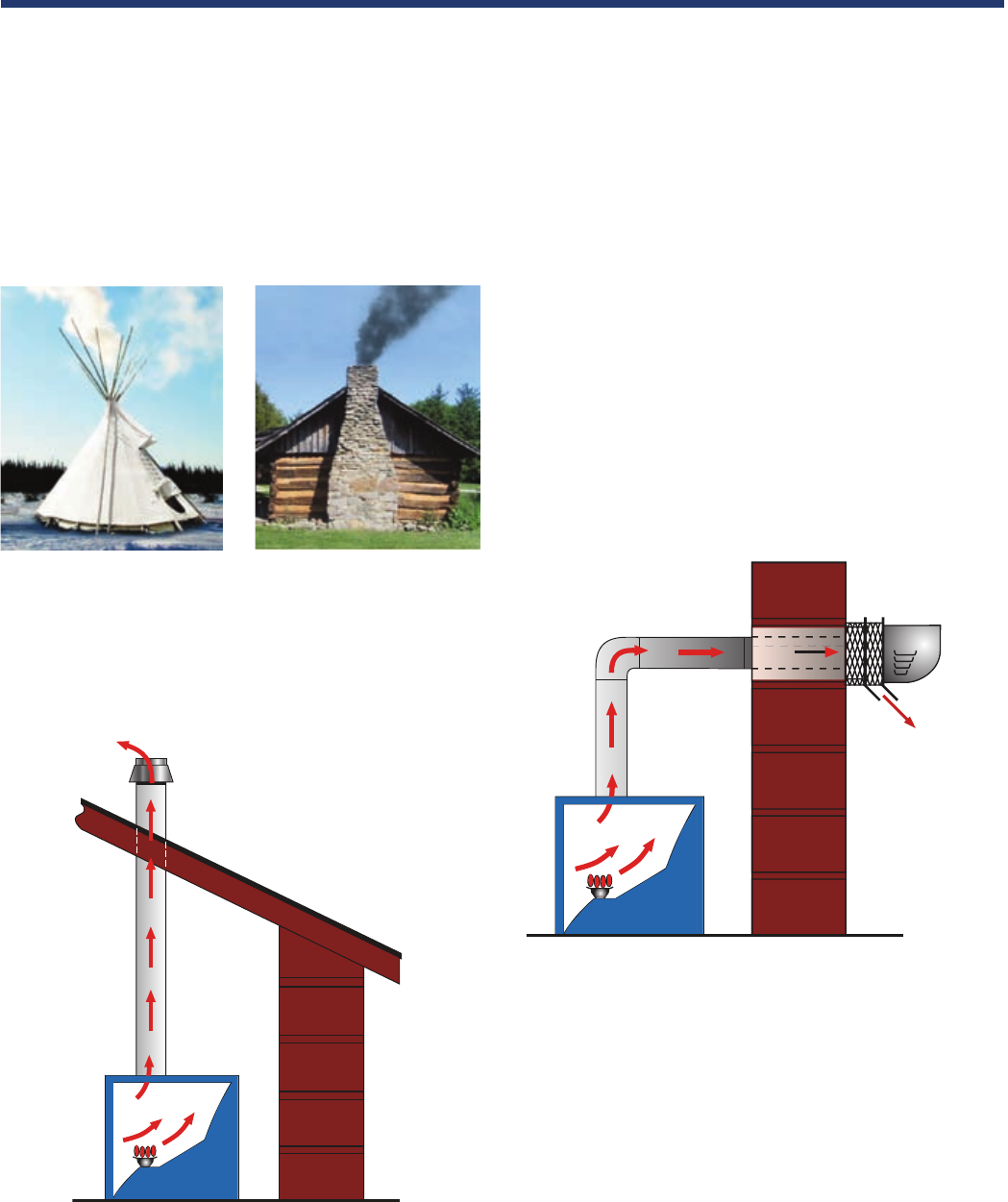
4
As long as people have used fire to heat, it has been
necessary to vent the smoke and combustion gases
from the dwelling. Since heat rises, the natural solution
was to allow the gases to vent through the roof via a
hole or chimney. For centuries, this "natural draft" style
of venting has been the accepted standard for venting
stoves, furnaces and boilers. Whether fired by wood,
coal, oil or gas, this system worked well and, when
possible, is still used today.
Energy Efficiency and Tighter Homes
In the late 1970's and early 80's, energy efficiency
became a top priority in America resulting in tighter
homes and more efficient heating equipment. Tight
homes restrict the infiltration of outside air which also
restricts natural draft. Higher efficiency furnaces
generate "cooler" exhaust gases which are more difficult
to exhaust naturally as well. These factors led to the
development of a mechanical method of venting to
properly remove combustion gases from the dwelling.
Homes without Chimneys
Electric heat grew in popularity through the 1960's
and 70's, resulting in the construction of homes without
chimneys. Today, many homeowners are converting
their heat from electric to gas or oil. In these cases, the
contractor is faced with a challenge of venting the
equipment. Choices include constructing a chimney or
mechanically venting through the sidewall. Sidewall
venting is much less expensive, easier and faster.
Deteriorating Chimneys
Another factor contributing to the use and growth of
power venting has been the deteriorating chimney.
Oil and gas combustion generate acid rich gas that can
eventually destroy a clay or masonry chimney. A
deteriorating chimney can be relined with metal duct,
but even metal duct is subject to rust and corrosion due
to the destructive nature of the acid and condensation.
Sidewall venting is safer and less expensive than
relining a chimney.
The Evolution of Venting
Oil Burner
Conventional
Venting
Hot air rises. As long as a chimney exists, it is in good
condition and the combustion gases are warm enough
to rise naturally, this method can be effective and safe.
Oil Burner
Vent
Gases Out
Power
Venting
Mechanically pulls gases through the sidewall, saving
the cost and space required for a chimney.
7137FCHVentGuideOil_New:7137FCHVentGuideOil 5/8/08 10:42 AM Page 4



